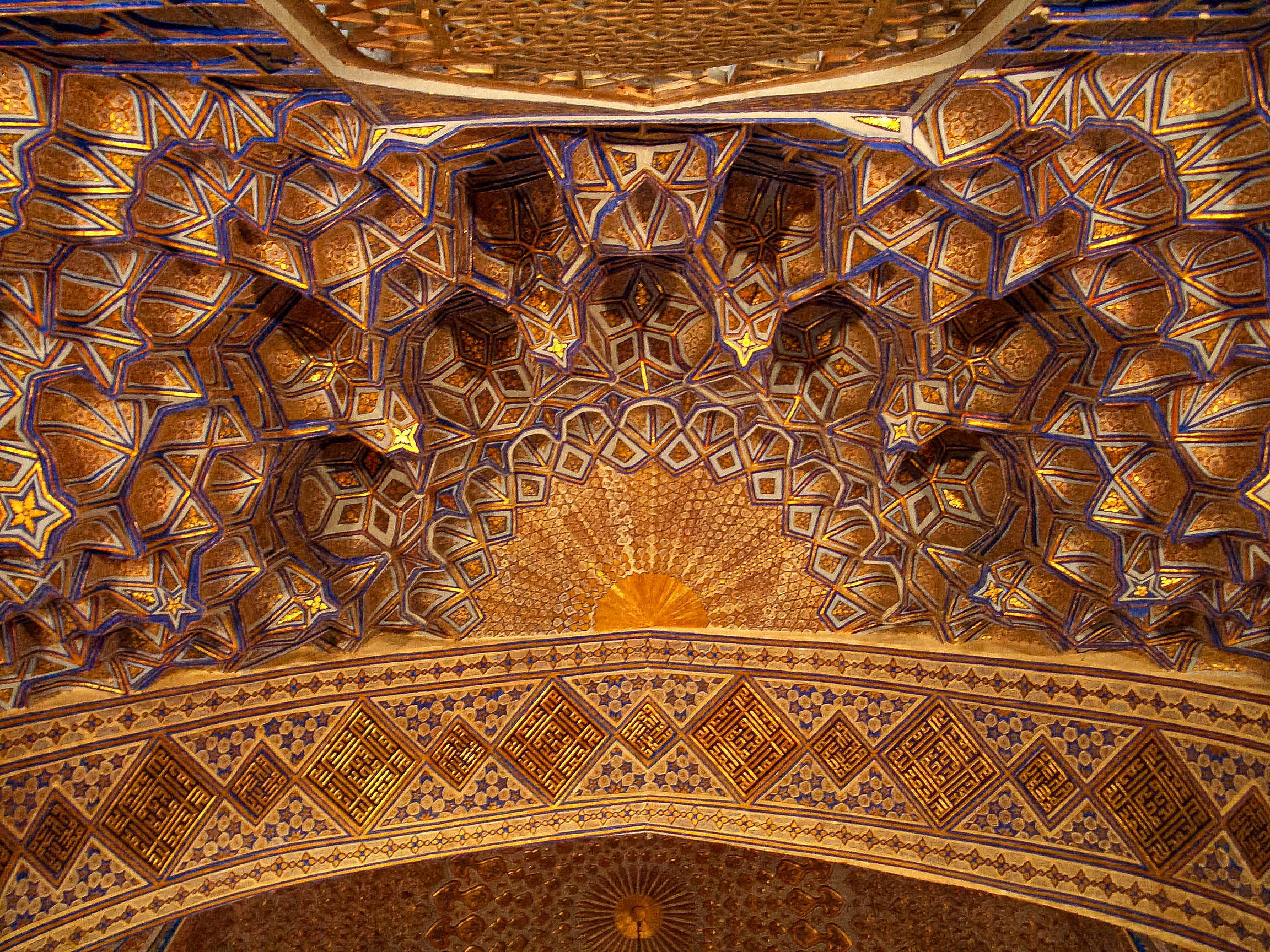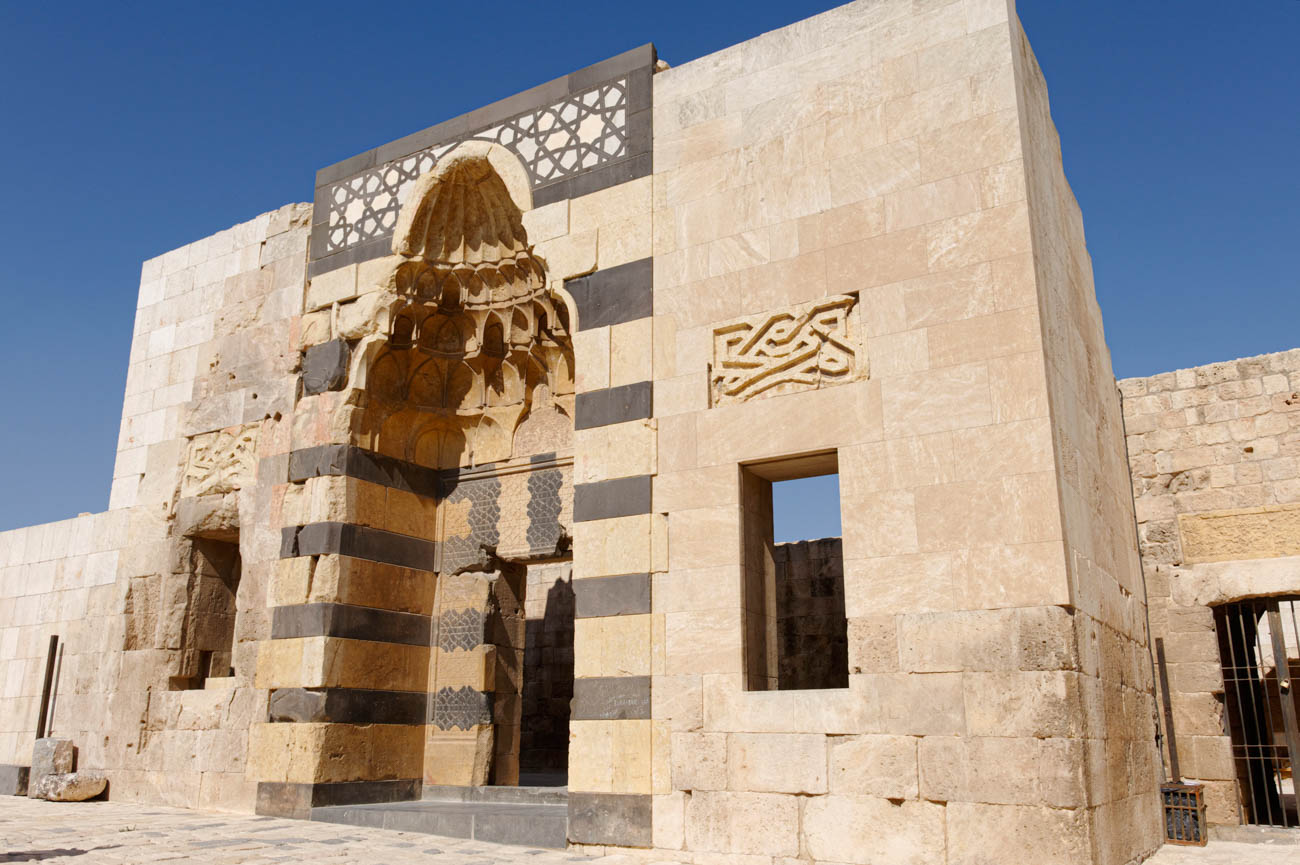Islamic ornament: Geometry, arabesque and calligraphy
5.4 The Muqarnas: A three-dimensional geometric composition
Subtle mixtures of geometry and rhythm also characterised the muqarnas or stalactite vault, which is distinctive to Islamic architecture and decoration. The muqarnas is both a structural element that fills the zones of transition between walls and domes and a decorative element that copies the same structural composition. See, for example, the decorative muqarnas over the mihrab of the mausoleum of Gur-i Emir, Samarkand, Uzbekistan (1404) and the structural muqarnas over the portal of the Ayyubid Palace in the citadel of Aleppo, Syria (c. 1210) seen below. In its simplest form, the muqarnas can be described as layers of superimposed niches that link or decorate two surfaces. Muqarnas domes, vaults, niches and decorative friezes are found in different construction materials including brick, stone, wood and stucco, all over the Muslim world.

Painted and gilded muqarnas over the mihrab of the mausoleum of Gur-i Emir, Samarkand, Uzbekistan. 1404.
© Yahya Michot

Portal of the Ayyubid Palace. Citadel of Aleppo, Syria. c. 1210.
Sklifas Steven / Alamy
A closer look
To see what a muqarnas looks like in reality and appreciate its intricate geometry, explore the earliest surviving drawing of a muqarnas, which was found in the Takht-i Sulaiman excavations in the north-west of Iran. The plaster panel of 50 × 50 cm was inscribed with a design of a muqarnas dating to c. 1270, and is currently housed in the archaeological museum of Berlin in Germany. This panel intrigued mathematicians who experimented with drawing it into an exact plan. The plan and the drawing of the Takht-i Sulaiman muqarnas were later studied and analysed by the Numerical Geometry Group at the University of Heidelberg. Follow the link and look at the three-dimensional computer models of the muqarnas prepared by this group. This is one example of the complexity of muqarnas elements. Can you see the relationship between the muqarnas’s decorative concept and that of geometric interlace and vegetal arabesques? All these decorative elements are based on the idea of division and repetition that can be manifested in a variety of ways, in this case in three-dimensional geometry.
Optional personal activity: Muqarnas
For a survey of muqarnas types and their geographical distribution, explore the website ‘Muqarnas: A Three-Dimensional Decoration of Islamic Architecture’ developed by Professor Shiro Takahashi of the Tama Art University, Japan.